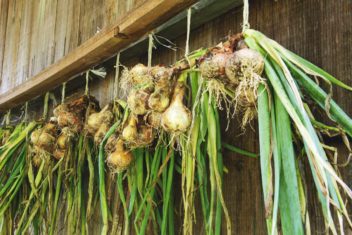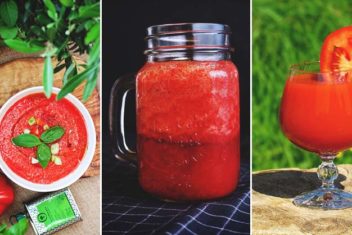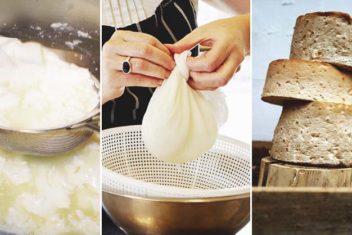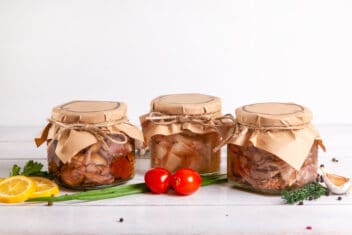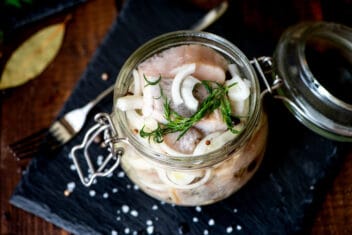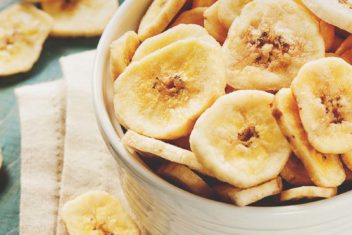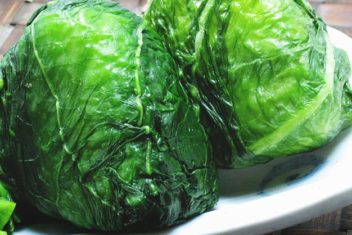Anyone who grows their own food gets terribly upset when and if anything goes to waste. Fortunately, drying vegetables as snacks—or for future use—is a great way to ensure that what you’ve grown goes into bellies rather than the compost heap.
Below are several recipes for making (and using) dehydrated vegetables. These range from snacks and treats to long-term storage options and seasonings.
1. Kale Chips
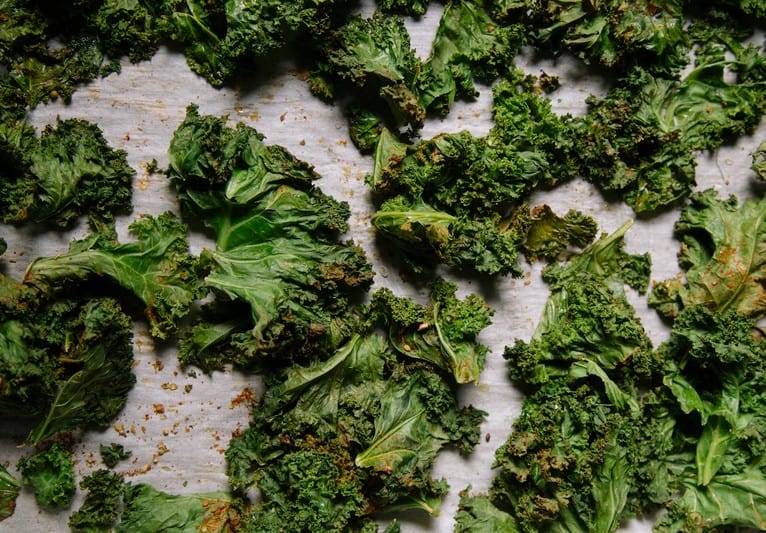
Wash your kale, pat it dry, and then tear it into pieces about twice the size of an average bite. These shrink quite a bit during drying, so keep that in mind.
Toss with about a tablespoon of oil per large bunch of torn kale, and season to suit your preferences. These are delightful with salt and nutritional yeast, but I also love them with Kernels dill pickle or all-dressed popcorn seasonings.
Set your dehydrator to 145°F and dry for two hours. Then, reduce the heat to 120°F and dry for another four hours. At this point, check them to see how dry they are.
Continue to dry at 120°F for an hour at a time until they’re brittle enough to crumble between your fingers. If you don’t eat them immediately, store them in a clean, sterile jar until you get the munchies.
As with most other dehydrated vegetables, you can also leave these unseasoned and store them for use in other recipes later. These dehydrated kale leaves are ideal for adding extra nutrients to soups and smoothies.
2. Beet Chips
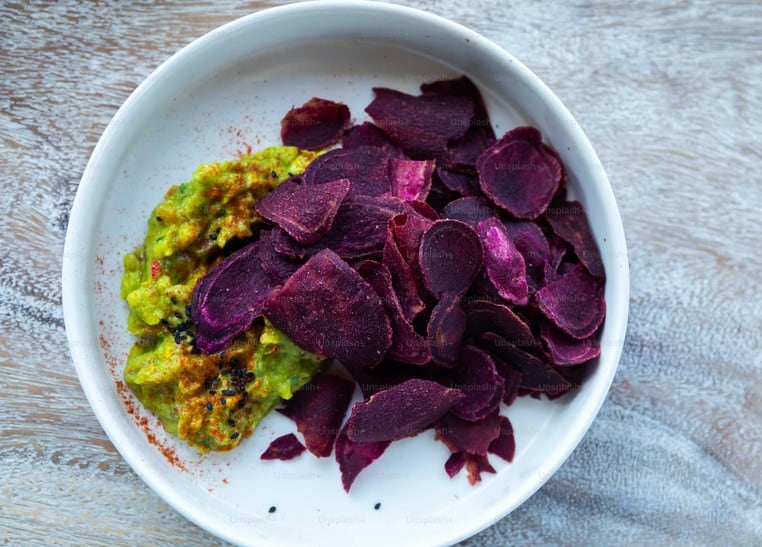
Beetroot chips are beyond delectable: they have a sweet, earthy flavor that can be enhanced with either savory or sweet seasonings, and they’re packed with iron and other beneficial nutrients.
Wash, peel, and slice beets to about an eighth inch thick with a mandoline slicer. Then toss with a bit of cooking oil, season with salt, herbs, and spices of your choosing, and dehydrate at 125°F for 8–10 hours.
If they aren’t brittle-dry, keep drying at the same temperature until they are. Consume immediately or store in a sealed container for up to a year.
If you don’t season the beet slices, you can process them into dried beetroot powder. This can be used in multiple ways, from adding it to smoothies or sauces to using it as pigment for homemade lip balm.
3. English Cucumber Chips
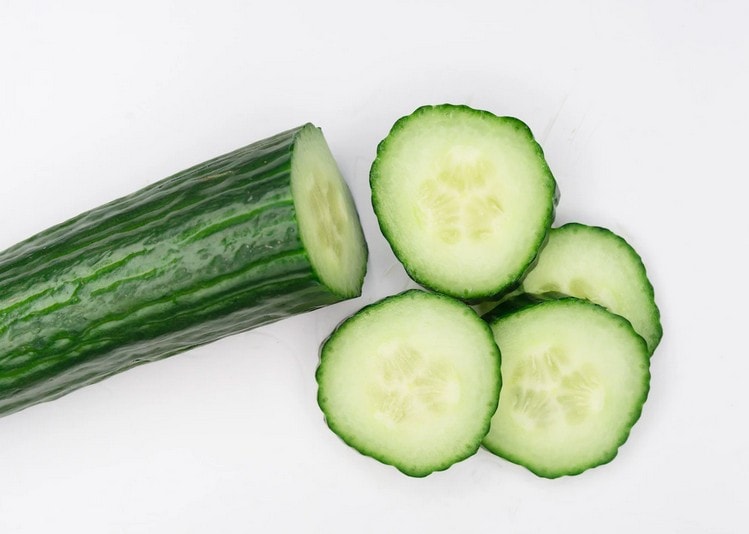
If you love the taste of cucumber, you might really enjoy these healthy, ultra-low-carb snacks. Just make sure to use seedless English cucumbers rather than heavily seeded field cukes.
Wash your cucumbers thoroughly and slice about an eighth inch with a mandoline slicer. Toss with the seasonings of your choice and spread out on your dehydrator trays.
I love powdered ranch dressing on these, especially with a bit of added wasabi, but simple salt and pepper work well, too.
Dehydrate these slices at 125°F for about 6–10 hours, then check for brittle dryness. Keep drying an hour at a time until they snap easily. Eat immediately, or store in an airtight container for up to a month.
Dehydrated cucumbers don’t do well in long-term storage, so enjoy them ASAP.
4. Sunchoke Chips
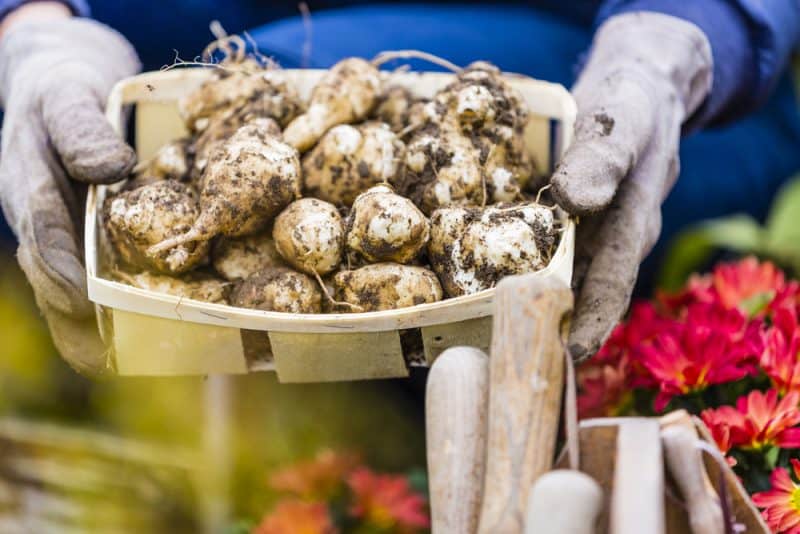
Sunchokes (aka Jerusalem artichokes) are the tubers of Helianthus tuberosus sunflowers.
These tasty tubers make excellent chips, but their high inulin content can cause gastric upset for some people. As such, the key to avoiding belly bloating (and worse) is to simmer them in an acid before drying them.
Use a mandoline to slice your washed, dried sunchokes into eighth-inch slices. Once they’re sliced, add them to a pot or pan and cover them entirely with bottled lemon juice. Bring this to a boil, then reduce to a simmer for 10-15 minutes.
Remove them with a slotted spoon, transfer them to towels or paper towels, and pat dry thoroughly.
Toss these sunchokes with some oil, and season with your preferred flavors. I like to use salt and garlic powder, but a bit of smoked paprika or Cajun seasoning is lovely, too.
Set your dehydrator to 140°F, spread the sunchoke slices around on trays, and dehydrate for 4–5 hours. Keep drying an hour at a time until your sunchoke slices snap easily between your fingers. Then, either snack on them or store them in an airtight container.
5. Dried Pepper Slices
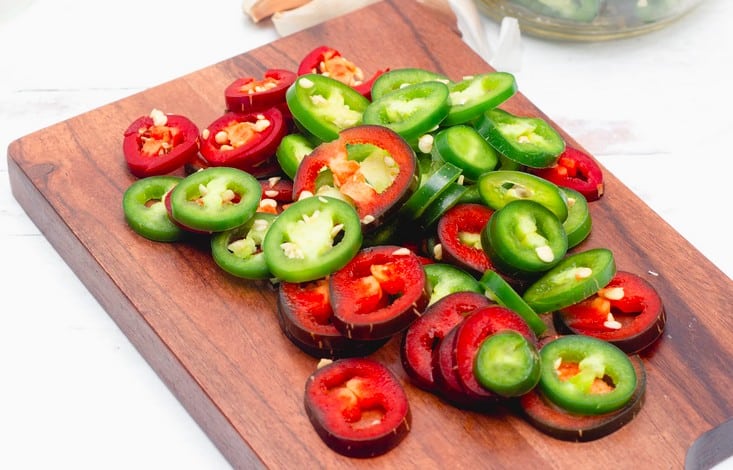
As far as dehydrated vegetables go, peppers are remarkably versatile. You can do these with either sweet peppers or spicy ones like jalapenos, habaneros, etc. It’s an ideal way to preserve these until you’re ready to make a batch of salsa, sauce, etc.
Slice your peppers thinly with a sharp knife or mandoline, and spread them evenly on dehydrator trays. Set the temperature to 145°F and dry for eight hours to start with.
Continue dehydrating for 1–2 hours at a time until they feel dry and shriveled. Not all dehydrated vegetables become brittle after drying: peppers, tomatoes, and eggplants tend to feel more leathery when they’re dried.
Transfer to a clean, dry jar and store out of direct sunlight until you’re ready to use them.
6. Dehydrated Eggplant “Bacon”
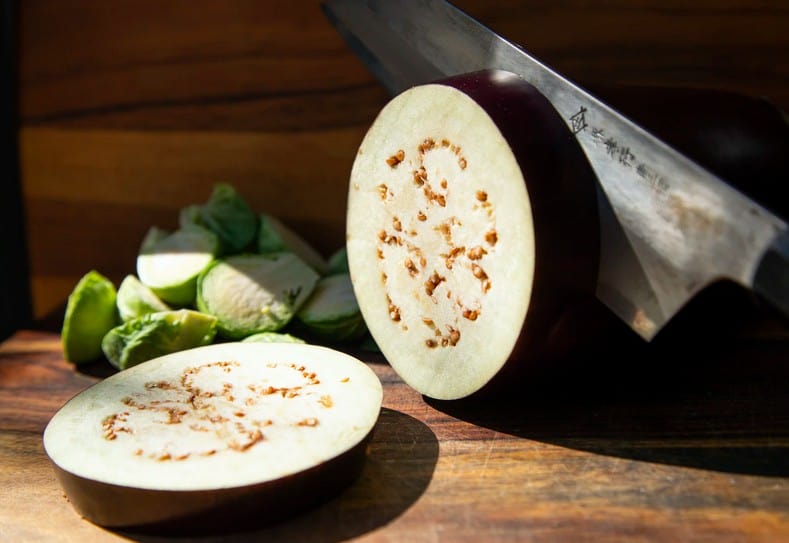
If you love the taste of bacon but prefer to eat plant-based foods, consider trying dried eggplant. It’s not one of the most popular dehydrated vegetables, but it is undoubtedly one of the tastiest.
Take a large eggplant, remove the stem, and cut it into narrow, quarter-inch slices with a knife or mandoline slicer. Toss these into a large bowl and mix your marinade:
- 1/4 cup vinegar
- 1/4 cup olive oil
- 1/4 cup soy sauce, tamari, or liquid aminos
- 1/4 cup maple, birch, or agave syrup
- 1 tsp smoked paprika
- 1/2 tsp garlic powder
- Salt and black pepper to taste
Once mixed, pour this over your eggplant slices, toss everything well, and allow to marinate for an hour. Then, spread the slices onto your dehydrator trays, set the temperature to 140°F, and dry for 10 hours.
Check after this amount of time to see how dry they are, and continue drying until they’re crisp. At this point, you can either eat them immediately or store them in a sterile, airtight container with a desiccant powder packet for up to a month.
7. Dry Snow Peas
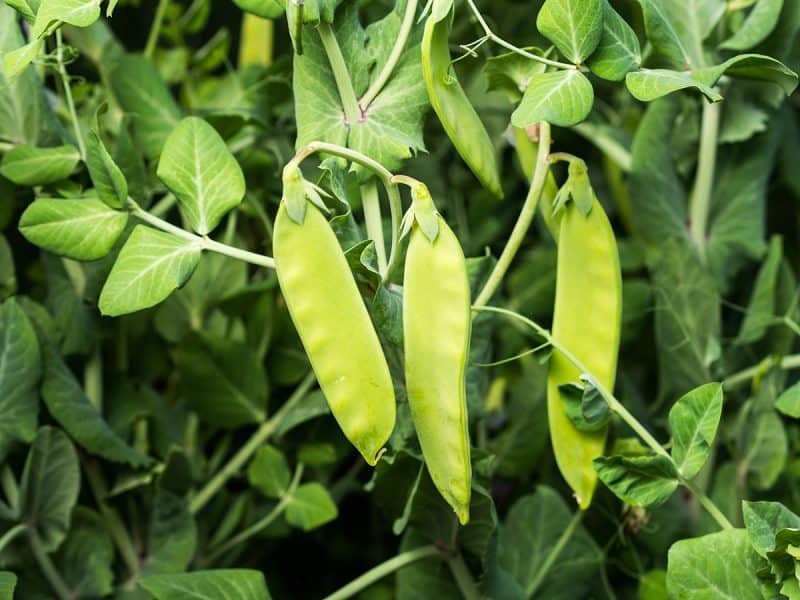
Dehydrated vegetables are multi-purpose, and dried snow peas are no exception. You can dry these to rehydrate later in stir-fries or other dishes, or season them and dry them into crunchy, healthy snacks.
Wash your snow (or snap) peas, trim the stems, and remove any strings. Blanch them for 3-5 minutes in boiling water, then shock them in ice water to stop the cooking process and retain their bright green hue.
Toss with a bit of olive oil, salt, and preferred seasonings, and spread on the dehydrator trays. Set the temperature to 130°F and dehydrate for six hours. Check for brittle dryness, and continue drying an hour at a time until they snap between your fingers.
8. Asparagus
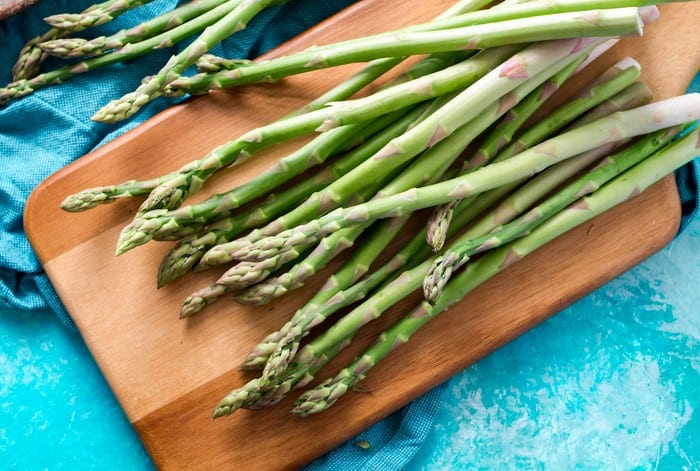
If you love asparagus, you likely look forward to the brief period in spring and early summer when it’s readily available. When it’s abundant and on sale, buy as much as you can and dehydrate whatever you don’t use immediately! Or grow your own!
You can snack on the dried pieces or use them in soups and casseroles to celebrate their springtime flavors year-round. This is the glory of dehydrated vegetables: you’re not limited to only enjoying them when they’re in season.
Cut your asparagus into one-inch pieces and blanch for 3-4 minutes in boiling water. Remove with a slotted spoon and pat dry between towels. Then spread them over your dehydrator trays, set the temperature to 125°F, and dry for 6–8 hours.
Check to see if they’re brittle-dry at this point, and if not, continue to dehydrate them until they are. Leave these unseasoned if you’re storing them for later use, but feel free to toss them with a bit of oil, salt, garlic or onion powder, and other herbs/spices if you’re making them into snacks.
9. Mirepoix Soup Mix

The base of just about every soup is the “mirepoix” combination of carrots, onions, and celery. Fortunately, soups are just as delicious when you use dehydrated vegetables as when you prepare them with fresh ones.
You can either make this soup mix all at once or dry the different vegetables at different times and mix them together later.
Peel and dice equal portions of these three vegetables into half-inch (once cm) cubes and keep them separate. Blanch the carrot cubes in boiling water for about three minutes, stopping them from discoloring in storage.
Then spread all of your vegetables onto dehydrator trays, keeping them separate: dehydrated vegetables dry at different rates, and you may need to keep some in there longer than others.
Set your dehydrator at 130°F for six hours, and check to see how dry everything is. Continue to dry for 1–2 hours at a time until all the vegetables are well dried.
The onions and celery are likely to dry more quickly than the carrots, so remove those trays once they’re done.
When everything is dry, mix it all in a large bowl and then transfer it into sterile glass jars with a canning funnel. When you’re ready to make soup, add them to a bit of stock in a large pot, simmer until soft, and build the rest of your soup from there.
10. Tabbouleh Mix
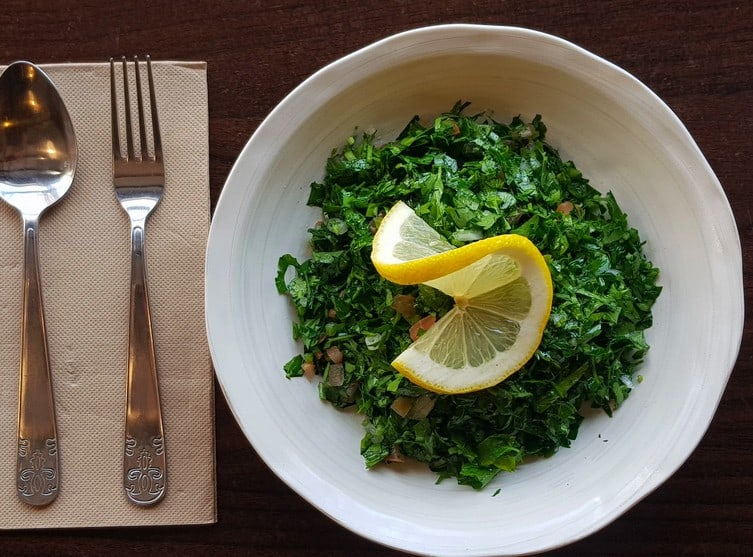
Tabbouleh (aka tabbouli) is an absolutely delicious side dish, but fresh parsley, cucumbers, and tomatoes may not always be available to you. This is especially true if you live in a frigid climate or don’t have a lot of variety at your local grocery store.
As such, consider using dehydrated vegetables prepared ahead of time and simply mixing them with bulgur or quinoa later.
Wash and pat dry cucumbers, tomatoes, onions, and fresh curly or flat parsley. Slice cucumbers into quarter or sixth-inch slices with a mandoline, then cut each round into quarters.
Next, cut the onion and tomato slices a quarter-inch thick, remove the tomato seeds, and dice. Finally, remove parsley leaves from their stems and toss those stems into the stock pot or your compost heap.
Spread the vegetables on separate dehydrator trays, with the parsley placed in the highest position. Set your machine to 130°F and dry for six hours.
Check for brittle dryness, and continue at one-hour intervals until the cucumbers, onions, and parsley are crisp and the tomatoes are leathery. You likely have to remove the parsley first, as it’s the thinnest.
Once dry, pulse the parsley briefly in a food processor or blender to pulverize it. Then, mix all the ingredients and store them in a glass jar until needed. When you’re ready to make fresh tabbouleh, rehydrate these in water and lemon juice, then prepare the dish as usual.
11. Portable Vegetable Soup
You may not think of edible leather when you think of dehydrated vegetables, but let’s change your mind about that!
I fell in love with the idea of “portable soup” after seeing an 18th-century recipe on the Townsends YouTube channel. This can be made with any type of soup, but cooking down and dehydrating vegetable broth is particularly handy.
Make your favorite vegetable stock recipe, and strain it well through cheesecloth. Next, return it to the pot and place it on low-medium heat, stirring regularly as it reduces.
This may take a few hours, as you’re aiming to evaporate enough liquid so it creates a thick, sludgy paste at the bottom of your pot. Remove this and allow to cool to room temperature.
Line your dehydrator trays with parchment paper and spray or brush with cooking oil. Next, ladle a bit of reduced stock onto each tray, using a spatula to spread it around evenly until it’s about a quarter inch thick.
Set your dehydrator’s temperature to 140°F, and dry for 8-10 hours. Check it for dryness, and keep dehydrating it until it has a dry, tough, leather-like texture. At this point, remove it and use a knife or scissors to cut it into strips or pieces, and store it in an airtight container.
12. Tomato Skin Powder

This is a great way to ensure that little of your harvest goes to waste. Most people skin their tomatoes when canning sauce or salsa, and those tomato skins end up in the compost heap.
The key to making the most out of dehydrated vegetables is to ensure that nothing goes to waste at all, and that includes skins.
Once you’ve removed the skins from your tomatoes, spread them out on dehydrator trays with enough room for air to circulate easily. Set to 135°F and dry for 6–8 hours.
Test for dryness at this point, and continue drying for an hour at a time until brittle enough to crumble between your fingers.
At this point, you can either pulverize the skins in a food processor or coffee grinder, or if you’re feeling particularly industrious, grind them with a mortar and pestle.
Once they’ve been ground into a fine powder, transfer it to an airtight jar and store it in your spice cupboard. This powder has a strong tomato flavor with tangy acidity and adds an extra note to sauces, salsas, egg dishes, and more.
13. Garlic Scape Powder
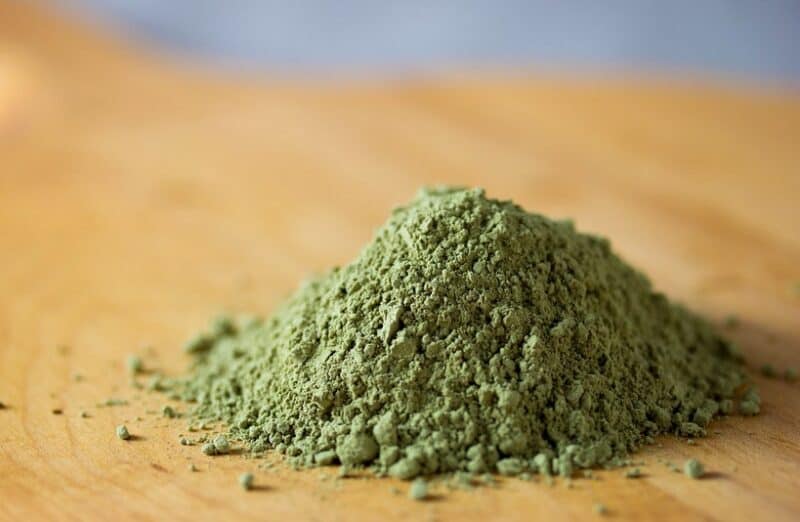
If you’re lucky enough to have garlic scapes to work with, they make an exceptionally good powder once dehydrated. After harvesting them, cut your scapes into half-inch (one cm) pieces and spread them onto your dehydrator trays.
Set the temperature to between 100 and 120°F, and dry for five hours. Check them at this point, and dry them for an additional hour at a time until they crumble into powder easily when crushed.
You can store this powder as it is and use it to season your favorite dishes or transform it into garlic scape salt. If you choose the latter, mix two-thirds garlic scape powder with a third of sea salt. Once thoroughly combined, use it as a garnish whenever possible.
14. Dehydrated Caramelized Onions

Onions are great when dehydrated, and caramelized onions are stunning. These semi-crunchy onions can be used as a garnish on mashed or baked potatoes, as well as casseroles, omelets, etc.
Alternatively, you can rehydrate them to use in dishes such as mujadara or French onion soup.
Cook down your favorite white onions on low heat until they’re a deep, golden brown. They’ll be a little slurpy by this point, so you’ll have to use your mesh dehydrator trays for them.
Spread them out well, set your dehydrator to 130°F, and dry for six hours. Check at this point to see how they feel to you: they should feel a bit leathery but also dry to the touch.
When in doubt, dehydrate for another hour or two. Once done, either freeze them in a zipper bag or store them in a sterile, airtight jar until you’re ready to use them.
Don’t Be Afraid to Play Around

Try experimenting with dehydrated vegetables in different, creative ways. For example, dried tomato powder and dehydrated onions are excellent mixed into savory bread dough, such as focaccia.
Similarly, garlic scape powder is delicious in egg or potato salad. You can also branch out to use similar species, such as making spinach or nettle chips instead of using kale or zucchini chips instead of cucumbers.
Season your veggies however you like, adjusting salt and spice levels to suit your individual tastes. Also, feel free to make different batches for everyone in the family!
For example, my partner loves kale chips with nutritional yeast, while I prefer pickle or ranch. Get creative, and enjoy nourishing your body in new, healthy, and absolutely delicious ways.


